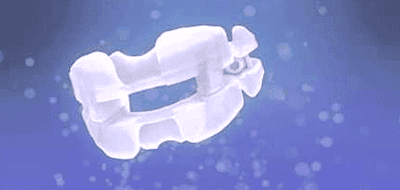 Not every mandibular advancement device (MAD) is a solution for every snorer. They all fit differently and have unique features, so always make your decision based on your needs and not how well it performed for someone else you know. Check out my full VitalSleep mouthpiece review for the unique features of this mouthpiece. The list below may help you determine if this is a product you should try, or not.
Not every mandibular advancement device (MAD) is a solution for every snorer. They all fit differently and have unique features, so always make your decision based on your needs and not how well it performed for someone else you know. Check out my full VitalSleep mouthpiece review for the unique features of this mouthpiece. The list below may help you determine if this is a product you should try, or not.
- Teeth Grinding – If you suffer from bruxism (teeth grinding), you can wear VitalSleep. It is not necessarily a solution to treat the problem, but the layer of protection between your upper and lower teeth can actually help reduce the effects of the disorder.
- Latex Allergy – VitalSleep is completely latex-free, so if you have an allergy to latex, you will be safe wearing this mouthpiece. This is a point you should keep in mind if you decide to try a different mouthpiece. A lot of people don’t know they are allergic to latex until they have a reaction.
- TMD – If you have temporomandibular joint disorder, VitalSleep should not be worn. The repositioning of the joint can worsen symptoms. Not sure if you have TMD? Does your jaw ever feel locked in a position, or do you feel a popping or clicking sound when you chew? You may struggle to open your jaw wide, and your face might swell sometimes. Individuals with TMD may also suffer from hearing problems, ringing in the ears, headaches, dizziness, toothaches, neck aches, and upper shoulder pain. If you have these symptoms, you should check with your doctor before wearing VitalSleep or any other MAD.
- Overbite – VitalSleep is not recommended for individuals with an overbite as the product may not fit properly.
- Mouth Breather – If you have a deviated septum, nasal polyps, sinuses, or any other issues that force you to breathe through the mouth, you will be thrilled to learn that VitalSleep has airflow ports to allow you to breathe through your mouth.
- Sleep Apnea – VitalSleep is designed to treat snoring. Some sleep specialists recommend MADs to help with obstructive sleep apnea (OSA). If you have been diagnosed with OSA be sure to talk with your doctor first before trying any type of mouthpiece.
- Dentures – As long as you keep your dentures in while you sleep, you can wear VitalSleep. If you remove them, and you are missing front teeth then VitalSleep will not stay in place. This holds true if you are missing teeth and don’t wear dentures, as well.
- Braces – VitalSleep can’t be used if you have braces or Invisalign.
- Bridges, Crowns, and Caps – As long as your dental work is more than 1 year old, you should be fine wearing VitalSleep.
The post VitalSleep: Is it Your Ideal Option? appeared first on Snoring HQ.
No comments:
Post a Comment